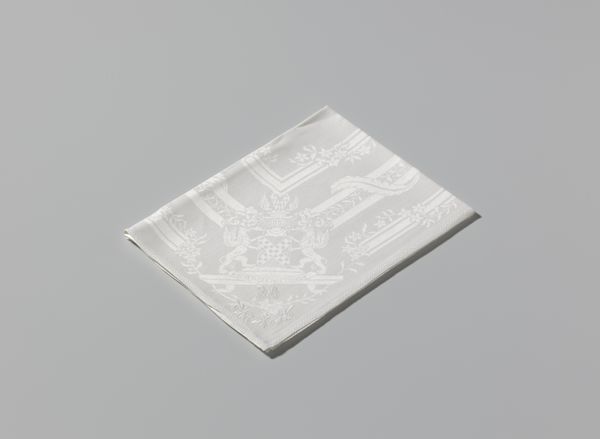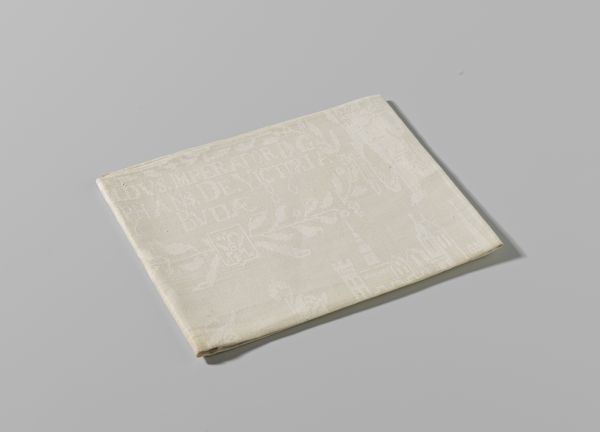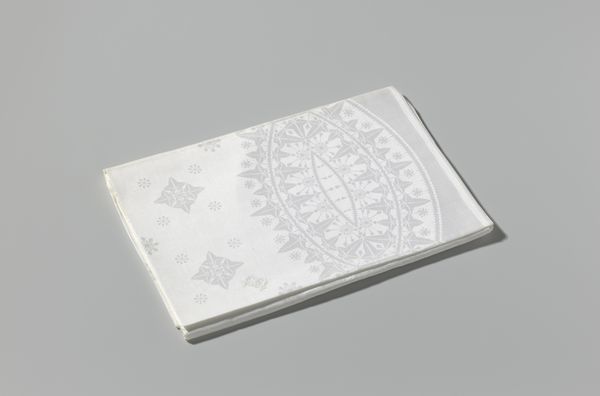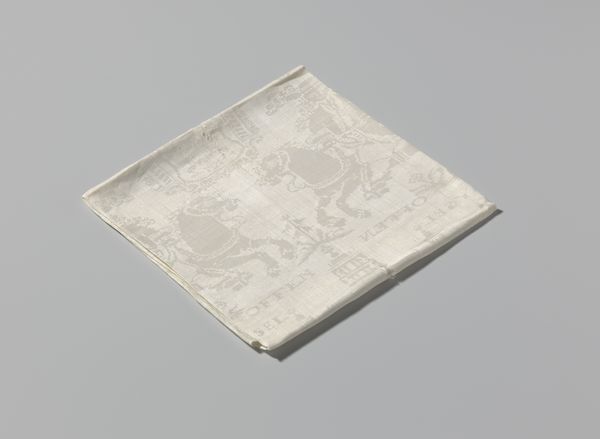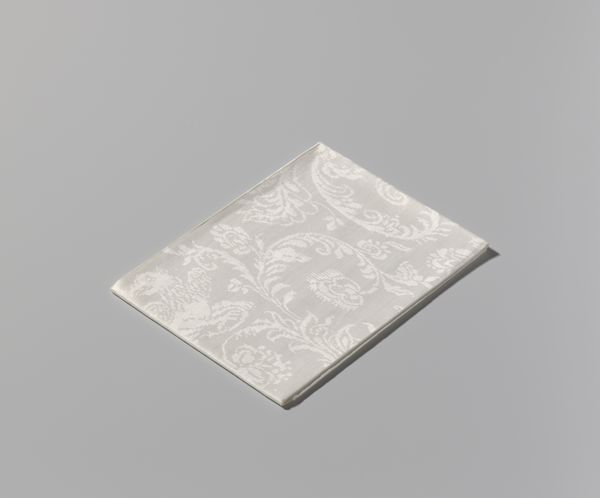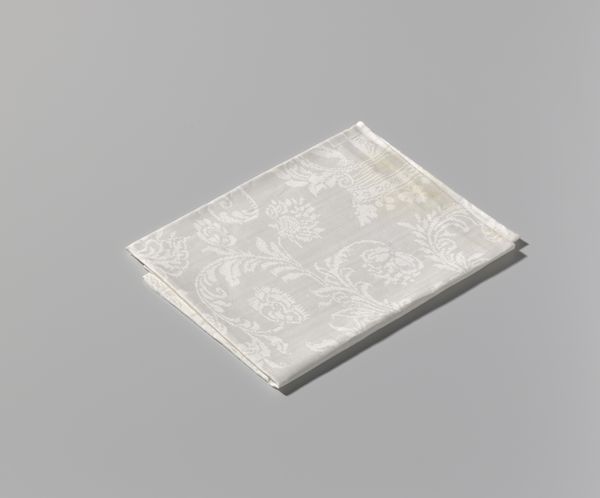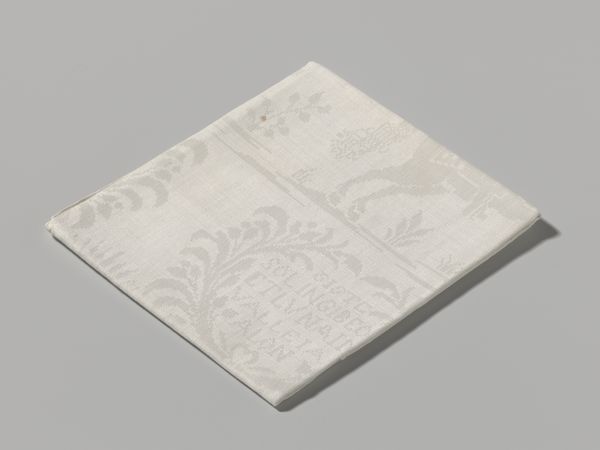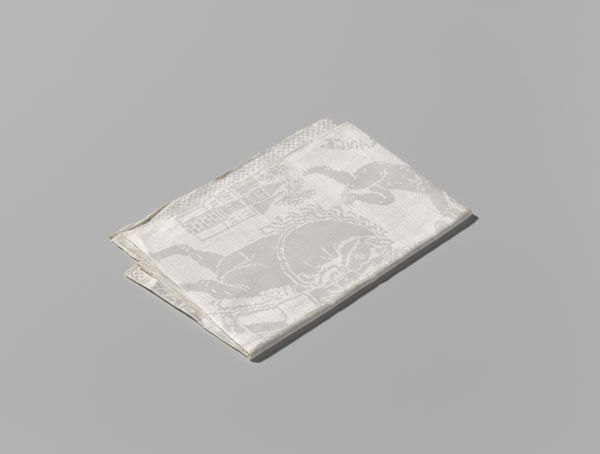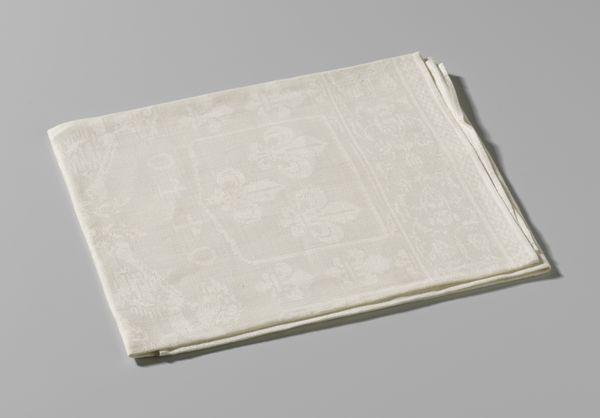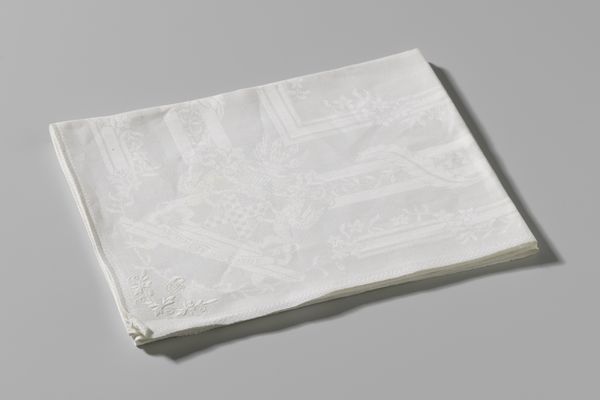
Servet met wapen George IX de Seton, Earl of Wintoun, datum 1712, gemerkt ES. 1712
0:00
0:00
silk, textile
#
homemade paper
#
silk
#
book design
#
flat design on paper
#
light coloured
#
hand drawn type
#
textile
#
personal journal design
#
book mockup
#
publication mockup
#
decorative-art
#
design on paper
#
publication design
Dimensions: height 108.0 cm, width 84.0 cm
Copyright: Rijks Museum: Open Domain
This linen damask napkin, woven in 1712 and marked 'ES', features the arms of George Seton, Earl of Winton. Napkins like this one offer a glimpse into the social fabric of early 18th century Scotland. The intricate heraldry speaks to the enduring importance of lineage and aristocratic identity during a period of political and economic change, when the Acts of Union had recently integrated Scotland with England. The very act of commissioning such a detailed and personalised item underscores the consumption patterns of the elite. Textiles provide valuable historical information. We can study them to uncover attitudes toward rank, status and national identity in this period. Historians might turn to estate records, family papers, and textile trade documents to understand the commissioning of these textiles within the context of aristocratic life. From this, we might then reveal how seemingly mundane objects become potent symbols of a complex social order.
Comments
No comments
Be the first to comment and join the conversation on the ultimate creative platform.
